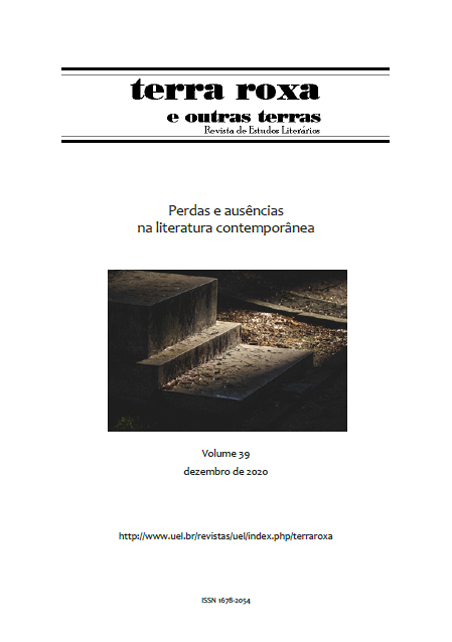It doesn't know what to inscribe/write or the solitude in "the Handsomest drowned man in the world", by Gabriel García Márquez
DOI:
https://doi.org/10.5433/1678-2054.2020v39p103Keywords:
The handsomest drowned man in the world, Solitude, LiteratureAbstract
In this essay, the story "The handsomest drowned man in the world", written by Gabriel García Márquez (2014), is analyzed, considering the "essential" discourse that materializes solitude in the narrative. In the intermittent reunion that constitutes the essential discourse, according to Blanchot, we will observe the ways in which the drowned man sees solitude on two levels, understanding that this movement deprives the drowned man of being and reveals a kind of image about him that apart from everything that approaches him: solitude in the world and essential solitude. The body of the drowned man, that shies away from a representation, is consistent with the image of the story itself and reveals a diffuse and complex image of presence/absence, visibility/invisibility, an image that spreads through the texture of language that the narrative presents. This reading departs from postulates by Maurice Blanchot (2011, 2010 and 2005) about literature.Downloads
References
BLANCHOT, Maurice. O espaço literário. Trad. Álvaro Cabral. Rio de Janeiro: Rocco, 2011.
BLANCHOT, Maurice. A literatura ainda uma vez. A conversa infinita - 3: a ausência de livro, o neutro, o fragmento. Trad. João Moura Jr. São Paulo: Escuta, 2010. 167-178.
BLANCHOT, Maurice. O livro por vir. Trad. Leyla Perrone-Moisés. São Paulo: Martins Fontes, 2005.
COVIZZI, Lenira Marques. O insólito em Guimarães Rosa e Borges. São Paulo: Ática, 1978.
DURAS, Marguerite. Escrever. Trad. Rubens Figueiredo. Rio de Janeiro: Rocco, 1994.
FOUCAULT, Michel. Outros espaços. Estética: Literatura e Pintura, Música e Cinema. Rio de Janeiro: Forense Universitária, 2001. 411-422.
GARCÍA MÁRQUEZ, Gabriel. O afogado mais bonito do mundo. A incrível e triste história da Cândida Erêndira e sua avó desalmada. Trad. Remy Gorga Filho. 26ª. ed. Rio de Janeiro: Record, 2014. 34-53.
GARCÍA MÁRQUEZ, Gabriel. A solidão da américa latina. Eu não vim fazer um discurso. Trad. Nepomuceno. Rio de Janeiro: Record, 2011. 22-28.
Downloads
Published
How to Cite
Issue
Section
License
Copyright (c) 2020 Terra Roxa e Outras Terras: Revista de Estudos Literários

This work is licensed under a Creative Commons Attribution 4.0 International License.
Authors who publish in this journal agree to the following terms:
a) The authors retain the copyright and grant the journal the right of first publication, the work being simultaneously licensed under the Creative Commons Attribution-NonCommercial 4.0 International License, allowing the sharing of the work with acknowledgment of the authorship of the work and initial publication in this journal.
b) Authors are authorized to assume additional contracts separately, for non-exclusive distribution of the version of the work published in this journal (eg, publish in an institutional repository or as a book chapter), with acknowledgment of authorship and initial publication in this journal.
c) Authors are allowed and encouraged to publish and distribute their work online (e.g. in institutional repositories or on their personal page) after the editorial process, as this can generate productive changes as well as increase impact and citation of the published work (See The Effect of Open Access).
d) The authors of the approved works authorize the journal to, after publication, transfer their content for reproduction in content indexers, virtual libraries and the like.
e) The authors assume that the texts submitted for publication are of their original creation, taking full responsibility for their content in case of any objection by third parties.




















